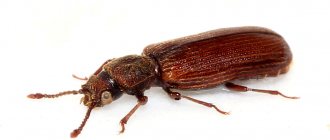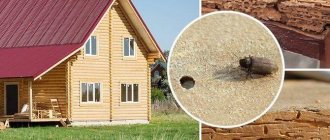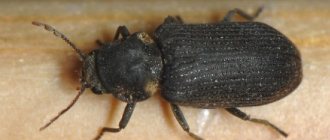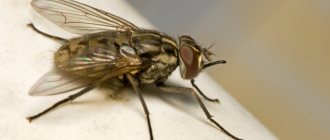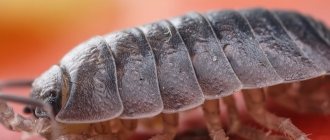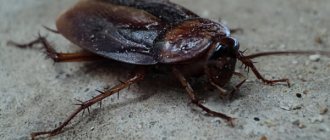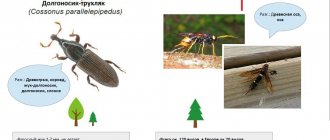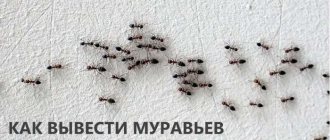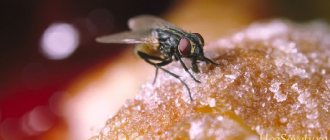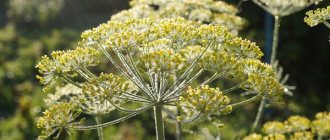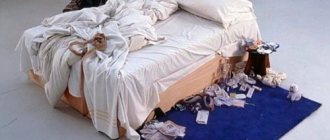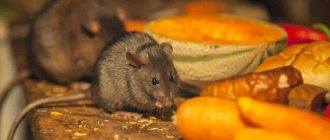Longhorned beetles are a fairly serious threat to wood, as it is part of their diet. Scientists know about more than 17 thousand representatives of this family. The most common is the black barbel. They are also called wood-boring beetles.
These insects damage plants that grow outside, as well as the wood from which houses and other buildings are made, as well as other wooden structures. They can turn wooden houses into dust, which you should not turn a blind eye to. At the first sign of the appearance of this pest, you should take care of how to get rid of it.
Longhorned beetle: description
The longhorned beetle grows up to 10-20 mm in length. It has a flat body and long mustache. The body may have a black or brown tint, with a blue or green tint. The larvae of this beetle are considered the most dangerous.
The female lays eggs in a tree, gnawing a hole with her powerful jaws. At one time, the female is capable of laying up to 400 eggs, which indicates a serious danger to wooden plantations. At the same time, she climbs the tree as high as possible. Due to this, the places where eggs are laid are difficult to detect. In the same way, they lay eggs in the ceilings under the roof, as well as in building structures.
After about a couple of weeks, larvae emerge from the eggs and begin to damage the wood. Larvae can stay in a tree from 5 to 17 years, or even longer. During this period, they are able to make passages in a tree up to 40 km long. In one day, the larva moves 15-30 mm forward, while increasing in weight by 2 times. The larvae are dangerous because they are practically undetectable because they do not appear on the surface. They will appear after they develop into an adult woodcutter beetle. For this reason, larvae can be seen when the tree is completely rotten and easily destroyed.
What they look like
The size and color of insects depend on their species. More than 700 species of longhorned beetles live in Russia. The main part of them are black and black-brown individuals. Their size ranges from 5 to 25 mm. The body of insects may have a blue-green or purple tint.
A distinctive feature of the appearance of insects is their scaly whiskers. They can be 5 times longer than the body. Insects' eyes are located at the base of their whiskers. The beetles have powerful front jaws and three pairs of legs. Frightened individuals make a sound similar to a creaking or grinding sound.
The largest beetle species in Russia is the relict Ussuri longhorned beetle. This insect species is listed in the Red Book as endangered. Not all longhorned beetles can fly. Those individuals that can do this create a lot of noise during flight. Male insects have a pointed body, while females have a rounded body.
Causes and signs of appearance in the house
Often, after cutting down an area, the wood is stored in this place for a long time. Longhorned beetles waste no time and flock to trees that are no longer able to protect themselves from pests. As a result, they lay eggs in the wood, thereby infecting it. Longhorned beetles appear in the house as a result of using already infested wooden structures.
Therefore, improper storage of felled trees leads to the appearance of these pests, especially if high humidity contributes to this.
The trees cut down are used to build houses, make furniture and other purposes. Over time, larvae emerge from the eggs and begin to make passages in the wood, because of this certain sounds may be heard, similar to rustling or ticking. If these sounds are made during the daytime, this means that the pests are behind the bark. At night, sounds are heard from the activity of the larvae, which are located in the thickness of wooden structures.
You can find out that a tree is infected:
- By the presence of winding passages on the surface of the wood.
- Based on the presence of brown or yellow powder.
- By the appearance of liquid with a sour, pungent odor from the passages of the larvae.
- By how easily the bark is separated from tree trunks.
- By the presence of caterpillars (larvae) in wooden structures.
Longhorned beetle in one of the forest districts of the Oryol region
Tips for using wood structures
Recommendations:
- Inspect the wood once a year for insect damage.
- If damage is found, immediately treat with protective agents.
- Longhorned beetles love to live in damp wood. Therefore, the room must be kept dry and humidity should not be allowed to increase.
- Destruction of woodworm is a painstaking, long-term work; insects multiply intensively. For prevention, the tree needs to be treated 2-3 times. The interval between procedures is 2-3 weeks. The best time for processing is spring-summer. At this time, females lay eggs and larvae appear - the most dangerous wood pests.
- For construction, take a tree that is not infested with larvae. It's not worth saving on this. The wood must be cleared of bark.
- To prevent infection, treat the tree with a long-acting insecticidal solution before use.
- Heavily contaminated wooden structures in the house should be replaced and destroyed (preferably burned).
The appearance of longhorned beetles in the house causes a lot of worry and trouble for the owner. I am glad that today there are many means to help get rid of harmful insects. The main thing is to detect the infection in time and eliminate it. It’s better to protect yourself from the parasite in advance. If you do not pay attention to the problem in a timely manner, after some time it can become an irreparable disaster. Longhorned beetles can completely destroy a house.
How to get rid of longhorned beetle using chemicals
If longhorned beetles are found in the house, you need to immediately take measures to destroy them. In order for wood to last as long as possible, it must be processed before building a house. As a rule, they use a fumigation method based on phosphine gas. If the tree has not been treated, then beetles will definitely appear. Then you will have to do a series of actions.
For example:
- First of all, it is necessary to check the extent of damage to the wood. To do this, take a screwdriver and use it to pierce the wooden structures. If the tool easily fits into the wood, then it is better to replace such structures.
- Those structures that the beetle has not yet reached must be treated with special liquids. Before this, wooden structures are cleaned with a wire brush, after which all dust and sawdust must be removed with a vacuum cleaner. After this, the surfaces are treated with an insecticide. Before this, everyone living in the home is evacuated and the windows and doors are tightly closed.
- In cases of severe infection, syringing is carried out. To do this, holes are drilled in the wood with a thin drill, in increments of 3 cm, and an insecticidal solution is injected into them using a syringe.
There are many products available on the chemical control market to kill all types of insects. In such cases, it is better to choose liquids, since they can penetrate the wood structure and destroy the larvae there.
What types of insecticides are there:
- Contact action . Insects and their larvae die upon contact with the chemical. These products are rarely used, since working with them can cause poisoning.
- Intestinal action . If it enters the intestines of an insect or larva, the substance leads to death. Based on such components, baits are made, which include an insecticide and an aromatic substance to attract insects.
- Fumigants . They emit gases that are toxic to insects.
You can use the following against longhorned beetles:
- Empire-20.
- Tree healer.
- Antibug.
- Antishashelin.
Rules for the use of insecticides
When using insecticides, you must adhere to a number of rules. For example:
- Residual agents are applied to surfaces using spray guns. These substances are practically safe for people and pets, so you can return to the room within a few hours after treatment.
- To treat hard-to-reach places, a different method is used. To do this, holes are drilled and a toxic substance is supplied through a thin tube to the problem area. After this, the hole is filled with wax or paraffin. After some time, the wood will be saturated with the product and the larvae will die. This treatment requires leaving the premises for several days.
- If the walls are made of thick logs, then it is better to use a product such as Lignofix I-Profi. A hole is drilled in each beam, every 5 cm from top to bottom or vice versa. The distance between the rows is up to 1 m. Then a syringe is taken and insecticide is applied to each hole. After some time, when the product is absorbed into the wood, the operation should be carried out a couple more times. After completion of the procedure, the holes are sealed with sealant.
- When buying a remedy for longhorned beetles, you need to make sure that the product will help, since it is intended specifically for such purposes.
Preventive actions
A wooden building needs protection from insect pests.
For these purposes, when constructing a facility, provide an obstacle to woodworms. All accessories that are not yet infected (boards, beams, beams, ceilings, etc.) are treated with an antiseptic, and in several layers. Wooden buildings that have been attacked by insects should:
- Treat with dry steam
at 80 degrees. The beams dry out and the larvae die. At the same time, the texture and appearance of the wood are not destroyed + fungus and mold are destroyed, and the nasty smell disappears. Steam is able to penetrate into the most remote corners of the structure. The process is not expensive, but it is fire hazardous. The method is only suitable for attic spaces. - Treat the room using fumigation
, i.e. gas - this effective remedy will protect the tree from bark eaters. You will need a steam supply unit that will penetrate all the cracks of the infected object and kill the larvae. The gas (it is odorless) disintegrates soon and will not harm humans. After treatment, the home is ventilated for two days. - The fogation method
involves fumigating a space using a fog generator. This is a fine spray in the form of an aerosol, which contains a chemical substance. The jet hits only the wooden surface; the interior of the wood is left untreated. - An antiseptic
is poured into the passages gnawed by the larvae using a syringe. The douching method will help at the initial stage, when there are still few pests. As the anti-putrefactive drug evaporates, douching is repeated. - The current method of pest control involves Microwave irradiation
. A special device is installed. It emits waves that heat the surface. The tree becomes hot - insects die in it. Microwave disinfestation works well in areas that are difficult to reach with other methods.
To fully combat lumberjacks in your home, constantly inspect wooden objects to see if any holes or passages have appeared. Frequent ventilation of the home will eliminate excess moisture, which attracts larvae.
Clipper is an effective remedy for barbels
This control agent is designed specifically to kill longhorned beetles. The active substance, entering the body of the pest or larva, leads to metabolic disorders and causes paralysis, and then the pest dies. If a beetle lands on a surface treated with Clipper, it will die immediately.
It is important to know! It is recommended to treat wooden structures with Clipper every year. In this case, you must adhere to the norms and rules described in the instructions for use.
Habitat, lifestyle, nutrition
Despite the fact that longhorned beetles are considered arboreal insects, they can live and reproduce not only in various types of wood, but also in shrubs and herbaceous plants.
Insects prefer to lay larvae in coniferous wood. In low-nutrient, dry wood they can live up to 45 years.
Settling in houses made of timber or logs, they begin to slowly destroy it, devouring the internal tissues of the tree. In addition to eating wood, beetles infect the home with mold.
You can determine the habitats of insects in the house:
- by a dull sound when tapping wooden structures or its deflection.
- on piles of wood dust near walls or wooden furniture;
In a forest or garden, beetles live under the bark of trees and in their core. The nutrition of insects depends on their habitat. Adults can feed on leaves, bark, petioles, pistils and stamens of plants.
Folk methods of struggle
Based on folk recipes, it is possible to prepare effective means of combating woodcutter beetles. For example:
- Take a 2.5% solution of sodium fluoride (250 g) and dilute it in 10 liters of water. Wooden structures are treated using a spray bottle, using 200 ml of product per 1 square meter.
- The product is prepared from identical parts of resin, black carbolic acid and naphthalene. The product is applied to the wood using a brush.
- It is permissible to treat wooden furniture with hot drying oil, but this method will deprive it of its attractiveness.
- Kerosene and turpentine are mixed in a ratio of 1:3. The tree is treated with Vaseline, and the prepared liquid is poured into the beetle passages. After this, the entrances are sealed with paraffin.
Distribution and habitats
They are distributed throughout the world, but the greatest species diversity is observed in the tropics, where 90% of the largest subfamilies of the true longhorned beetles (Cerambycinae) and Lamiinae (Lamiinae) are found.
They inhabit mainly forest areas, sometimes found as pests on wooden buildings.
Great spruce black beetle (Monochamus sutor)
Wood processing by professionals
It is often difficult to cope with the task on your own, at home. In this case, you can invite professionals who:
- The wood will be treated using fumigation.
- Microwave disinfestation will be carried out.
Each method has both advantages and disadvantages.
Fumigation
This is a method of treating wood with poisonous gases. Nowadays, this method is not often used, since the gas does not have high permeability and it is not possible to destroy the larvae inside the wood.
There is a similar method when drugs, in the form of tablets, decompose when exposed to air. As a result, phosphine gas is released. In one day, the product destroys all beetles and larvae, as well as eggs. The tablets decompose within 2 days.
Advantages of this method:
- Possibility of 100% destruction of all pests.
- The warranty covers 10 years.
- It is possible to cover a large area in a short period of time.
The disadvantage of the method is the high toxicity of the substance.
Microwave disinsection
Eggs and larvae die at temperatures of +55 degrees and above. If they are exposed to microwave installations that emit microwave waves, then the eggs and larvae begin to heat up, which is why they die. Microwave waves do not cause any harm to wood.
Advantages of the method:
- Microwave devices are safe for both people and pets.
- The method allows you to quickly and effectively get rid of pests.
- The method works in all weather conditions.
The only drawback is the nature of the work, since you have to look for places where woodcutter beetle larvae spoil the wood. Therefore, specialists use a special device - a stethoscope. Using this device, they listen to the house meter by meter and determine where the larvae are.
Are insects capable of flight?
Longhorned beetles are large insects.
It's hard for them to fly. Maneuvering requires speed, landing successfully requires effort. When flying, they emit a sound that is clearly audible. Location and weather conditions influence the beginning of takeoffs - in southern latitudes this is the beginning of spring, in the middle zone - the first two months of summer. Insects of Asian countries prefer autumn. Many are active during the day when it is hot. Some species leave their shelter overnight.
The flight function is needed to search for food. Females and males have different desires for flights, everything here is determined by the species.
Meaning, benefit and harm
Longhorned beetles feed mainly on dead wood, which makes them an important link in the cycle of substances in ecosystems. Sometimes this wood is used for building materials or buildings, in which case the beetles can cause serious economic damage. Species that feed on living trees are also considered pests.
Black (bronze) pine longhorned beetle
Pest prevention
Wood beetles in a wooden house bring a lot of trouble; if you miss the moment and leave events uncontrolled, then the matter can end in complete damage to the walls and beams of the building. Planned prevention should be a mandatory measure to preserve housing built from wood. It is much easier to prevent a problem than to solve it valiantly later. And in the fight against woodworm, victory may remain on his side.
Enjoying breakfast and lunch with delicious floors for several years, the grinder beetle and its family are capable of completely collapsing a house of any size. To avoid disastrous results from pests, a set of preventive actions should be carried out regularly.
How to prevent woodworms
A wooden house requires attention and care. A few simple rules will prevent the appearance of unwanted tenants.
- Primary processing of the material is carried out before construction begins. Such impregnations as “Pinotex”, “Antizhuk”, “Senezh” and “Phoenix” have proven themselves well.
- It is necessary to regularly inspect all surfaces for the appearance of holes and passages; pests should not be given a single loophole.
- Beetles readily settle in damp rooms, so you should regularly ventilate and dry the house, especially in the warm season.
- Cleanliness is the key not only to health, but also to the absence of pests in the house. All bulk products are best stored in jars with tightly sealed lids.
- Regular wet cleaning with disinfectants and wiping doors, windows and furniture with a mixture of turpentine, paraffin and creolin will reduce the appearance of the borer beetle in a wooden house to almost zero.
- Any piece of furniture in which a woodworm has infested must be immediately removed from the house and ceremonially burned.
